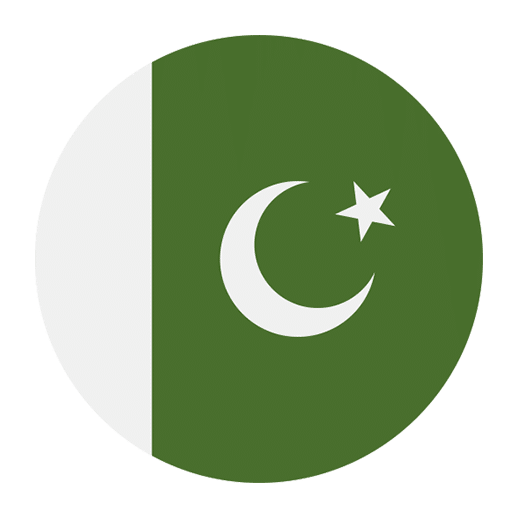Learning a new language can be an enriching and rewarding experience, and Urdu is no exception. As one of the major languages spoken in South Asia, Urdu boasts a rich literary tradition and a unique linguistic structure that appeals to language enthusiasts worldwide. One of the key components of mastering any language is understanding its grammar, and in this article, we will delve into the fascinating world of descriptive adjectives in Urdu grammar. We will explore how these adjectives function, their placement in sentences, and some examples to help you get a better grasp of their usage.
Understanding Descriptive Adjectives
Descriptive adjectives are words that describe or modify nouns by providing additional information about their attributes. In English, adjectives are relatively straightforward; they typically precede the nouns they modify (e.g., “a beautiful flower”). Urdu, however, has its own set of rules and nuances for the placement and usage of adjectives.
In Urdu, adjectives can come before or after the noun they describe, and they must agree with the noun in terms of gender and number. This means that the form of the adjective can change depending on whether the noun it describes is masculine or feminine, singular or plural.
Gender and Number Agreement
One of the most important aspects of using descriptive adjectives in Urdu is ensuring that they agree with the noun in terms of gender and number. Urdu nouns are either masculine or feminine, and adjectives must match the gender of the nouns they describe. Additionally, adjectives must also agree with the number of the noun, i.e., whether the noun is singular or plural.
For example, let’s consider the adjective “خوبصورت” (khubsoorat), which means “beautiful.” Here is how it changes based on the gender and number of the noun it describes:
1. **Masculine Singular**: خوبصورت لڑکا (khubsoorat larka) – beautiful boy
2. **Feminine Singular**: خوبصورت لڑکی (khubsoorat larki) – beautiful girl
3. **Masculine Plural**: خوبصورت لڑکے (khubsoorat larkay) – beautiful boys
4. **Feminine Plural**: خوبصورت لڑکیاں (khubsoorat larkiyan) – beautiful girls
Notice how the adjective “خوبصورت” remains the same in all forms. Some adjectives in Urdu do not change their form, but many do, especially those that end in “ا” (a) or “ہ” (ha).
Adjective Placement in Sentences
In Urdu, descriptive adjectives can be placed either before or after the noun they modify. However, the placement can sometimes affect the emphasis or the poetic nature of the sentence. Here are some examples to illustrate this:
1. **Adjective Before Noun**:
– خوبصورت لڑکی (khubsoorat larki) – beautiful girl
– بڑا گھر (bara ghar) – big house
2. **Adjective After Noun**:
– لڑکی خوبصورت ہے (larki khubsoorat hai) – The girl is beautiful.
– گھر بڑا ہے (ghar bara hai) – The house is big.
When the adjective comes before the noun, it directly modifies the noun. When it comes after the noun, it often forms part of a predicate and is connected by the verb “ہے” (hai) meaning “is” in English.
Types of Descriptive Adjectives
Urdu, like many languages, has a variety of descriptive adjectives that can be used to convey different attributes. Here are some common categories of descriptive adjectives in Urdu:
Adjectives of Quality
These adjectives describe the quality or characteristic of a noun. They tell us what kind of person or thing the noun is.
– اچھا (achha) – good
– بُرا (bura) – bad
– نرم (narm) – soft
– سخت (sakht) – hard
– تیز (tez) – fast
– سست (sust) – slow
Example sentences:
– اچھا طالب علم (achha talib-e-ilm) – good student
– سخت روٹی (sakht roti) – hard bread
Adjectives of Size
These adjectives describe the size of a noun.
– بڑا (bara) – big
– چھوٹا (chhota) – small
– لمبا (lamba) – long
– چھوٹا (chhota) – short
Example sentences:
– بڑا کتا (bara kutta) – big dog
– چھوٹا درخت (chhota darakht) – small tree
Adjectives of Shape
These adjectives describe the shape of a noun.
– گول (gol) – round
– چکور (chokor) – square
– لمبا (lamba) – long
– تنگ (tang) – narrow
Example sentences:
– گول میز (gol mez) – round table
– چکور ڈبہ (chokor dabba) – square box
Adjectives of Color
These adjectives describe the color of a noun.
– سرخ (surkh) – red
– نیلا (neela) – blue
– سبز (sabz) – green
– پیلا (peela) – yellow
Example sentences:
– سرخ سیب (surkh seb) – red apple
– نیلا آسمان (neela aasman) – blue sky
Adjectives of Origin
These adjectives describe the origin or nationality of a noun.
– پاکستانی (Pakistani) – Pakistani
– ہندوستانی (Hindustani) – Indian
– چینی (Cheeni) – Chinese
– امریکی (Amriki) – American
Example sentences:
– پاکستانی کھانا (Pakistani khana) – Pakistani food
– چینی کپڑے (Cheeni kapray) – Chinese clothes
Adjectives of Quantity
These adjectives describe the quantity or amount of a noun.
– بہت (bohot) – many/much
– کچھ (kuch) – some
– تھوڑا (thora) – little
– زیادہ (ziyada) – more
Example sentences:
– بہت سارے لوگ (bohot sare log) – many people
– تھوڑا پانی (thora pani) – little water
Forming Comparatives and Superlatives
Just like in English, Urdu also has comparative and superlative forms of adjectives to compare two or more nouns.
Comparative Adjectives
Comparative adjectives are used to compare two nouns. In Urdu, this is often done by adding “زیادہ” (ziyada) before the adjective.
Example sentences:
– یہ کتاب زیادہ دلچسپ ہے (yeh kitaab zyada dilchasp hai) – This book is more interesting.
– وہ لڑکا زیادہ لمبا ہے (woh larka zyada lamba hai) – That boy is taller.
Superlative Adjectives
Superlative adjectives are used to compare three or more nouns. In Urdu, this is often done by adding “سب سے” (sab se) before the adjective.
Example sentences:
– یہ سب سے اچھی کتاب ہے (yeh sab se achhi kitaab hai) – This is the best book.
– وہ سب سے لمبا لڑکا ہے (woh sab se lamba larka hai) – He is the tallest boy.
Common Mistakes and Tips
Learning to use descriptive adjectives in Urdu can be challenging, especially for beginners. Here are some common mistakes and tips to avoid them:
Gender and Number Agreement
One of the most common mistakes learners make is forgetting to match the adjective with the gender and number of the noun. Always double-check the gender and number of the noun and adjust the adjective accordingly.
Adjective Placement
Remember that while adjectives can come before or after the noun, their placement can sometimes change the emphasis of the sentence. Practice both placements to become comfortable with their usage.
Using Comparative and Superlative Forms
When forming comparative and superlative adjectives, remember to use “زیادہ” (ziyada) for comparatives and “سب سے” (sab se) for superlatives. These words are crucial for proper comparison.
Practice with Native Speakers
One of the best ways to master descriptive adjectives in Urdu is to practice with native speakers. Engage in conversations, listen to Urdu media, and try to use adjectives in your daily speech. This will help reinforce your understanding and usage of descriptive adjectives.
Conclusion
Descriptive adjectives play a vital role in adding color and detail to our conversations and writings in any language, and Urdu is no different. By understanding the rules of gender and number agreement, adjective placement, and the different types of descriptive adjectives, you can greatly enhance your proficiency in Urdu. Remember to practice regularly and immerse yourself in the language as much as possible. With time and dedication, you’ll find yourself becoming more fluent and confident in using descriptive adjectives in Urdu. Happy learning!

